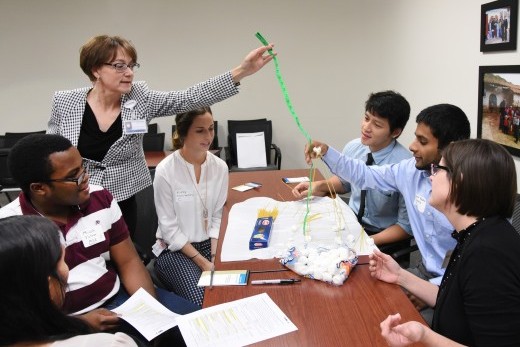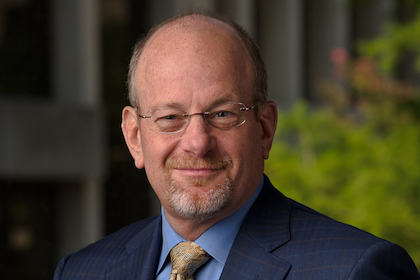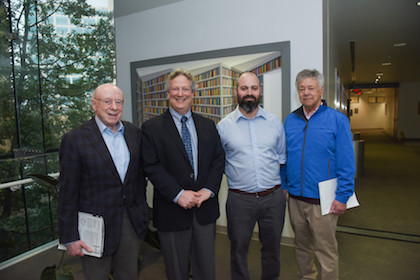Multiple schools come together for Convergence Days
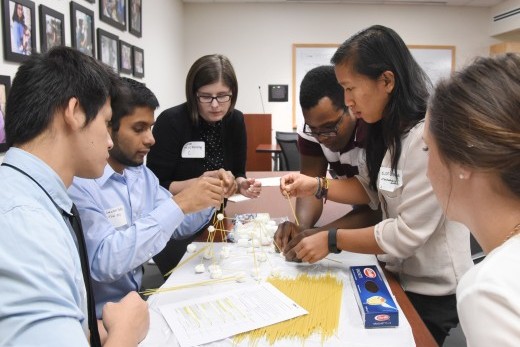
By Lin Lofley
More than 700 students who are planning careers in health care took part this week in Convergence Days, a two-day interdisciplinary experience that centered on pain relief therapies.
“Convergence is an introduction to interprofessional practice and education (IPE),” said Kristine Kamm, Professor of Physiology, and Director of Convergence. “This year we moved Convergence into the fall to better fit with the IPE curricula of both the medical and health professions schools.”
First-year students at UT Southwestern Medical School and the UT Southwestern School of Health Professions were joined by students from the Texas Woman’s University College of Nursing, UT Arlington College of Nursing, and the Texas Tech University School of Pharmacy.
Students of these schools met in mixed small groups on one of two days and – led by members of the medical, health professions, nursing and pharmacy faculty – small groups of combined students discussed TeamSTEPPS (Team Strategies & Tools to Enhance Performance and Patient Safety) and performed a team-building exercise that involved marshmallows, spaghetti, and the box the spaghetti came in.
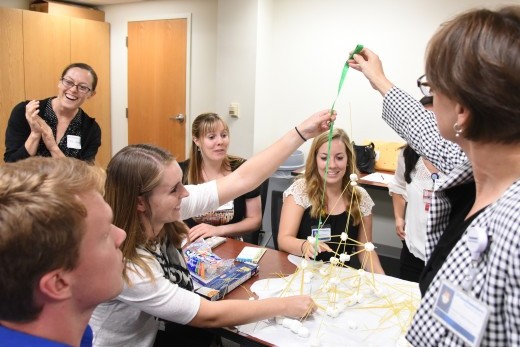
“These small groups of interprofessional students really came together as teams for this activity” said Kim Hoggatt-Krumwiede, Associate Dean of the School of Health Professions, and Associate Professor of Health Care Sciences. “Sometimes a student might not feel comfortable in the team activity because of his or her behavioral style, program of study, or school – but these students were great! Our goal is to build on and perpetuate this attitude toward teamwork as they transition into their healthcare careers.”
The 13 students in Ms. Hoggatt-Krumwiede’s small group also discussed the DISC (Dominance, Influence, Steadiness, Conscientiousness) personal assessment tool and how behavioral styles can be important for communication within a health care team including the patient.
And immediately afterward, they heard about how a real team of professionals came together to take care of a specific patient.
When Zenobia Jackson, of Euless, was referred to the UT Southwestern Pain Management Program she and her family were seeking halt her increasing dependence on opioids for an injury-induced pain syndrome.
“I was taking a number of medications to deal with my pain,” said Ms. Jackson, who had previously competed in half-marathon runs as part of an active lifestyle. “If it weren’t for my team here, I don’t know what I would have done.”
That team included Dr. Carl Noe, Professor of Anesthesiology and Pain Management, and of Clinical Psychology; Dr. Stephanie Jones, Assistant Professor of Anesthesiology and Pain Management; Dr. Richard Robinson, Associate Professor of Psychiatry; Dr. Jason Zafereo, Associate Professor of Physical Therapy; Dr. Nakia Duncan, Assistant Professor of Pharmacy Practice at Texas Tech University, and Registered Nurse Eugenia Bell.
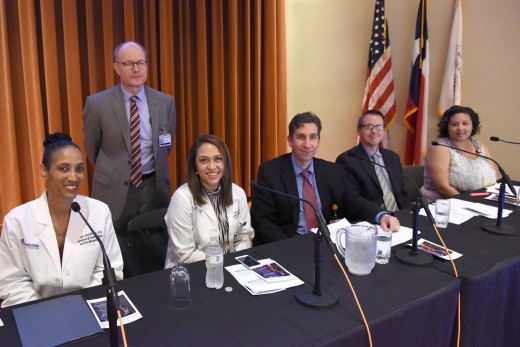
“I thank you for being here today, as I thank my team,” Ms. Jackson said. “You’re students today, but someday you will be helping somebody. The first person I met on my team was Eugenia Bell, and I could tell that she cared.
“If you see that someone cares about you, then that makes it much better and easier.”
“This was really worthwhile, I thought,” said first-year medical student Viet Chou, who took part in Ms. Hoggatt-Krumwiede’s small group. “I was able to get a sense of the perspectives of the other students from different disciplines, and how they think, and how we all need to work together.”
Mr. Chau, a graduate of Virginia Commonwealth University, said “the reason we’re in medical school in the first place is that we want to help people. I believe that we’re blessed to have that opportunity.”
